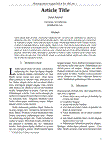| Sumario: | The shortage in freshwater in many countries, together with the competition for it with agriculture and other urbanactivities has increased the pressure to develop aquaculture in brackishwater and sea water. Tilapia are an excellentcandidate for aquaculture in brackishwater and seawater is due to their ability to tolerate a wide range of watersalinity. Salt tolerance depends on tilapia species, strains and size, adaptation time and method and environmentalfactors. Oreochromis mossambicus, O. aureus and T. zillii are the most salinity-tolerant tilapia species. O.mossambicus can tolerate up to 120‰ water salinity, but they can grow normally and reproduce at water salinity of49‰, and their fry live and grow reasonably well at 69‰. Blue tilapia (O. aureus) and Nile tilapia (O. niloticus) areless salinity tolerant. Tilapia hybrids descended from salt-tolerant parents are highly salt-tolerant. Cold tolerance oftilapia reared under different salinities is species specific. The nutrient requirements of tilapia reared in seawater arenot well-studied, and more research is needed in this regard. Published results indicated that tilapia reared inseawater and brackishwater environments may require lower protein levels for optimum growth than fish reared infresh water. Feed consumption, digestion and utilization by these fishes are also affected by the changes in watersalinity. In addition, the metabolic rate of tilapia increases with increasing water salinity. The economic potentials oftilapia culture in seawater have also not been well-investigated. However, the available information revealed thatrearing these fishes in saltwater environments can be cost effective, if proper management measurements areadopted.
|
|---|
